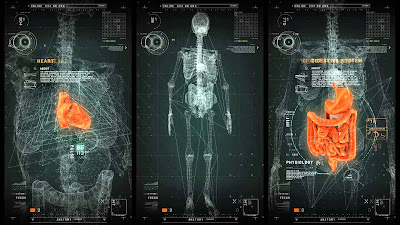Human-Technology Interface
Technology is all around us and is a huge part of every day life. This applies to our lives in the hospital as well. There are technological advances happening everyday. Technology helps us, as nurses, keep our patients safe and save lives when necessary. Human technology interface or human-computer interface (HCI) is the means of communication between a human user and a computer system. Devices are becoming available to mediate the human-computer interaction. These include graphics devices, touch-sensitive devices, and voice-input devices. HCI is a branch of the science of ergonomics, and is concerned especially with the relationship between workstations and their operators. This interface is incredibly important in a health care setting. With all the technological advances, it is our duty to take full advantage of them in order to benefit our patients.
Click here for more information
Nursing Practice
Nurses have a vast selection of technology at their fingertips. We use it everyday in our professional lives. It makes life easier. In the hospital, there are many machines that we utilize to help us care for our patients. From machines that take vital signs like Dynamaps to heart monitoring machines like telemetry monitors, we use this technology without thinking twice. It has become a part of our everyday life. Nurses sometimes take for granted the amount of technology that they can use. In the past, vital signs were taken manually. There is a dependence on the technology that we have. My thought always is, what if that machine breaks, will I know how to safely monitor my patient and care for them without it. They say that pretty soon there will be technology the listens to breath and heart sounds for you. Yes, the technological advances in medicine have been beneficial, but I think we need to remember our basics and practice our hands-on nursing skills sometimes.
Patient Care
The use of technology as it pertains to direct patient care is vast. We, as nurses, use different technology to care for our patients every day. From things as simple as the call bell system, to things as complicated as a ventilator. Technology is all around us. The use of this technology by nurses is important, but it is also important to think about how the patients can use the technology available to them as well. Patients have access to much more technology more than ever now. They are able to see parts of their charts online through the "patient portal" and they can connect with their physician's offices easier. Some healthcare systems are utilizing telemedicine where they can talk and see a provider through video chat, so the patient doesn't have to leave their home. Being able to use technology to benefit, advocate and have a say in their own care allows patients to be more involved, therefore taking better care of themselves.
Nursing Leadership
As nurse leaders, it is important that we act as the link between nursing practice and patient care. We need to be a support to the nurses and staff in using the technology that we have. We need to understand how to use the technology so we are able to demonstrate and give reasoning as to why we are using it. We also need to be an advocate to the patients and their use of the technology available to them. We should be knowledgeable about technology such as the "patient portal" so that we can use our experiences to promote it to our patients. Technology is only going to have a more prominent role to the healthcare systems and to nurses. Nursing leadership needs to be on board with it so that we can lead by example to the staff.
Exemplar
A 70 year old male patient, J. Hernandez came into the emergency department with the complaint of shortness of breathe and chest pain. An EKG, blood work, and vital signs were done and showed that the patient had a suffered a myocardial infarction. He was admitted to the cardiovascular telemetry unit. During transport to his room, the patient was on the Zoll, which was monitoring his heart rhythm and rate. Once in the elevator, the patient complains of worsening shortness of breath, and worsening chest pain. He is diaphoretic and pale. Suddenly the Zoll shows ventricular tachycardia. The nurse immediately feels for a pulse. It is weak and erratic. The nurse pushed the code blue button in the elevator so once off, the appropriate staff can come help. Once off the elevator, the provider comes and looks at the monitor. He instructs the nurse to put on the defibrillator pads and charge the defibrillator to 150 jules. The patient is shocked and his rhythm returns to normal sinus rhythm. The patient is immediately transferred to the ICU where he can be monitored more closely.
In this scenario, the use of technology is crucial is saving this patients life. The first things used were the EKG machine and vital signs machine. Blood work was also done and the lab tested it. This technology assisted with the initial finding of the myocardial infarction. The Zoll machine assisted in monitoring the heart rhythm and rate and also provided the defibrillator shock. This allowed the patients heart to go back to normal sinus rhythm, therefore saving the patients life. Once in the ICU, there is more advanced technology that can help the patient be monitored more closely. It is important to debrief the patient, once stable, and the family as to what happened. The patients electronic health record can be accessed to show test results and a recap of what had happened.
For more information on the human-technology interface




